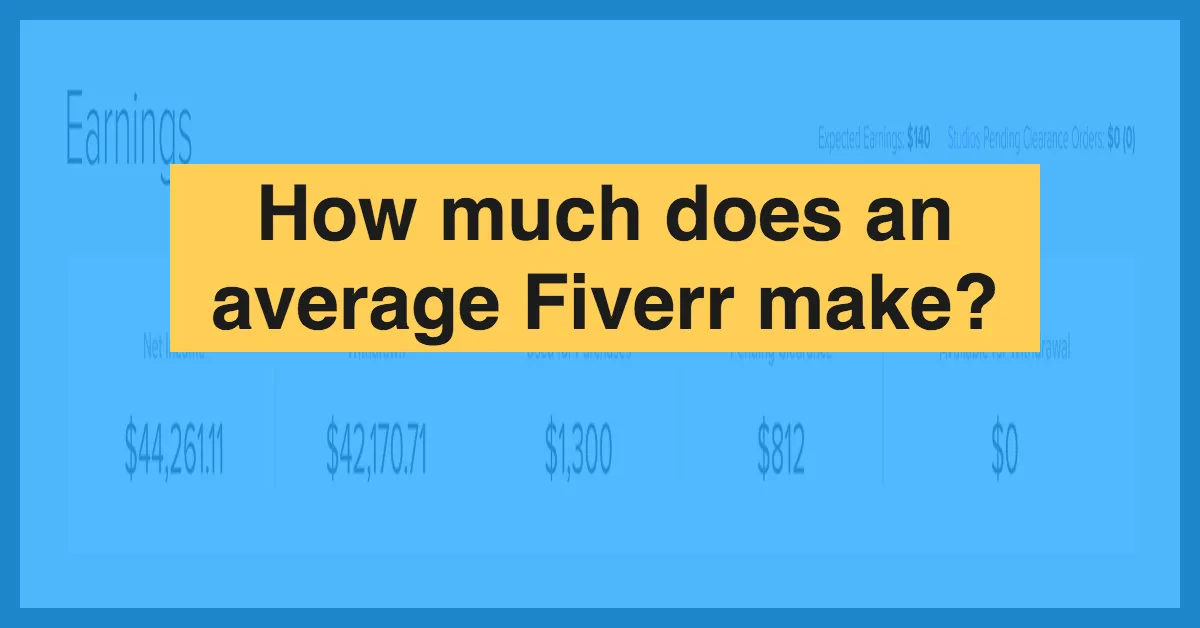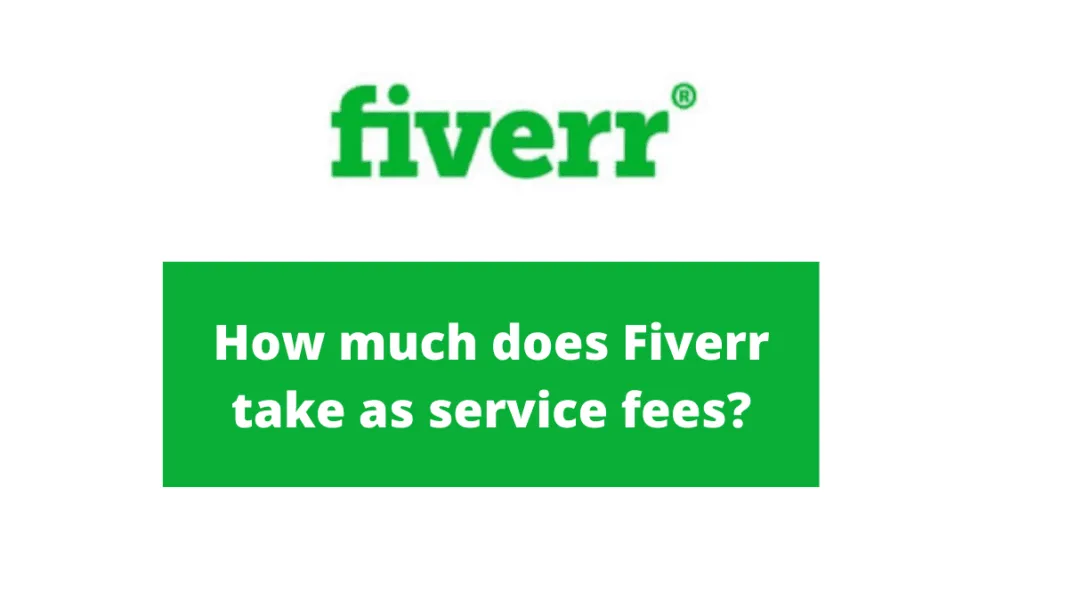Fiverr is a popular online marketplace that has transformed the way freelancers connect with clients. Established in 2010, it allows individuals to offer services, known as "gigs," ranging from graphic design to writing, music production, and even programming. But have you ever thought about how much revenue Fiverr generates? In this blog post, we’ll delve into the financial aspects of Fiverr, including its business model and revenue streams, which not only sustain the platform but also allow it to thrive in a competitive market.
The Business Model of Fiverr

Fiverr operates on a distinct business model that leverages the gig economy, providing a platform for freelancers (or sellers) to offer their services to clients (or buyers). Here’s a closer look at how this works:
- Marketplace Dynamics: Fiverr functions as an intermediary, connecting sellers and buyers. Freelancers create profiles and list their gigs, while clients can easily browse, filter, and select services based on their needs.
- Tiered Services: Gigs on Fiverr can vary in price, starting as low as $5, with freelancers also offering premium packages that include additional services or faster delivery times. This tiered pricing strategy allows buyers to choose according to their budget.
- Commission Structure: Fiverr earns revenue primarily through a commission-based model. For every gig completed, Fiverr takes a 20% commission, which means freelancers keep 80% of the earnings. This transparent structure makes it clear for users how revenues are shared.
- Subscription Services: In addition to regular gigs, Fiverr offers subscription services where clients can hire freelancers on an ongoing basis. This provides a steady income stream for both freelancers and Fiverr.
- Promoted Gigs: Sellers can pay for additional visibility through a feature called "Promoted Gigs," increasing their chances of landing clients. Fiverr benefits from this as well, as it adds to their revenue.
In essence, Fiverr has built a robust framework that not only facilitates freelance services but also allows the platform to continuously thrive, adapt, and evolve in the gig economy landscape.
Also Read This: How to Put a Profile Picture on Fiverr
3. Revenue Streams of Fiverr

Fiverr, the popular online marketplace for freelancers, boasts multiple revenue streams that contribute to its impressive financial health. Understanding these can give you a clearer picture of how the platform operates and generates income.
Here are the primary revenue streams of Fiverr:
- Service Fees: Fiverr charges a commission on every transaction that takes place on its platform. Typically, this fee is around 20% of the total service cost. So, if a freelancer sells a service for $100, Fiverr will keep $20, which adds up significantly across its vast user base.
- Subscription Models: Fiverr introduced subscription options for businesses that allow users to access premium features and services. This means that companies can pay a monthly fee for additional tools and support, driving recurring revenue.
- Promotional Services: In addition to standard offerings, Fiverr provides various promotional services to help freelancers and businesses gain visibility on the platform. These include featured listings and enhanced profiles, which come with a fee.
- Fiverr Business: This service is tailored for companies looking to streamline their hiring processes. It includes dedicated account managers and other tools for project management, generating a substantial revenue stream from enterprise users.
- Fiverr Learn: The platform also offers educational courses for freelancers and businesses, enhancing skill sets in specific areas. These paid courses contribute to Fiverr’s revenue while also increasing the skill level of its user base.
These diverse revenue streams enable Fiverr to remain flexible and adapt to changing market demands while ensuring steady financial growth.
Also Read This: How to Cancel a Buy on Fiverr
4. Financial Performance Over the Years
Fiverr's financial performance has shown remarkable growth since its inception in 2010. This growth can be attributed to a combination of increased user engagement, expansion into new markets, and the ongoing freelance economy's rise.
Here’s a snapshot of Fiverr’s financial trajectory over the years:
| Year | Revenue | Net Income | Key Highlights |
|---|---|---|---|
| 2019 | $107.1 million | - $36.5 million | Successful IPO, strong growth in active buyers. |
| 2020 | $189.5 million | - $4.2 million | Significant increase in freelance services due to pandemic. |
| 2021 | $274.9 million | $16.2 million | Expansion of services and user base, profitability achieved. |
| 2022 | $350.5 million | $50.2 million | Continued growth in global markets and new service offerings. |
As you can see, Fiverr's revenue has consistently increased, reflecting a growing demand for freelance services. The company has also managed to turn a profit, demonstrating efficient management and a robust business model. This financial strength positions Fiverr well for future growth and innovation in the competitive freelancing landscape.
Also Read This: How to Get Fiverr Pro Verified
5. Comparison with Competitors
When diving into the world of freelancing platforms, Fiverr is just one of the many players in the game. To truly understand Fiverr's financial success, it's essential to compare it with its key competitors. Not only will this give us a clearer picture of Fiverr’s position, but it will also highlight the unique aspects that set it apart from the rest.
In the realm of freelancing, the primary competitors of Fiverr include:
- Upwork - Known for a more extensive selection of project-based work and hourly contracts, Upwork targets established freelancers and businesses seeking long-term collaborations.
- Freelancer.com - This platform leans heavily on bidding for projects, which can sometimes drive prices down, making it a competitive option for freelancers.
- Guru - Offers a similar model to Fiverr but focuses on long-term contracts and allows freelancers to showcase their portfolios more thoroughly.
- PeoplePerHour - This site connects clients and freelancers through hourly work, thus providing a different pricing mechanism compared to Fiverr’s fixed gig offerings.
Fiverr's model attracts many beginners due to its clear, fixed-price gigs, which can range from $5 to thousands. This simplicity allows new freelancers to easily enter the marketplace. Alternatively, platforms like Upwork might appeal more to seasoned professionals, as they can negotiate rates and find high-profile projects.
Ultimately, Fiverr stands out for its ease of use and broad range of services—from graphic design to voiceovers—making it a go-to for quick jobs. Understanding this comparison not only sheds light on how much Fiverr makes but also how it captures a significant market share amidst fierce competition.
Also Read This: How to Show Online on Fiverr: A Step-by-Step Guide
6. Factors Affecting Fiverr's Income
Fiverr, like any business, doesn't just sit on its laurels. Several factors impact its income and profitability. Some of these factors are intrinsic to the platform, while others are influenced by external market conditions. Here’s a closer look at what affects Fiverr's income:
| Factor | Description |
|---|---|
| Market Demand | The need for freelance services fluctuates. Economic conditions can boost or reduce demand for services on Fiverr. |
| Quality of Services | High-quality freelancers tend to draw more business. As freelancers improve their skills, they can command higher prices. |
| Pricing Structure | Fiverr's model of setting fixed prices allows it to attract gig-hunting clients, but competitive pricing can influence overall income. |
| Marketing Strategies | How well Fiverr markets its services affects traffic and user acquisition, directly impacting its revenue. |
| User Experience | A seamless user interface and reliable service keep both freelancers and clients satisfied, encouraging repeat business. |
In conclusion, understanding the various factors that affect Fiverr’s income not only highlights the challenges the company faces but also showcases the dynamic nature of the freelancing market. By continuously evolving and addressing these factors, Fiverr can strive to maintain and grow its income in a competitive landscape.
Also Read This: Should You Delete Your Fiverr Gig or Not?
The Future Outlook for Fiverr's Earnings
As we look ahead, the future of Fiverr’s earnings appears to be shaped by several key factors that could influence its growth trajectory. With increasing digitization and remote work trends becoming the norm, Fiverr is well-positioned to capitalize on these changes. Let’s break down some of the crucial elements impacting Fiverr's future earnings:
- Growing Demand for Freelancing Services: With more businesses opting for freelance talent instead of hiring full-time employees, platforms like Fiverr are likely to see continued growth. This trend has been exacerbated by the global shift towards remote work.
- Diversification of Services: Fiverr has expanded its offerings beyond the creative fields to include areas like programming, digital marketing, and even consulting. This diversification can attract a wider range of clients and boost revenue streams.
- International Expansion: Fiverr’s moves to penetrate international markets could significantly enhance its user base. By catering to the needs and preferences of a global audience, Fiverr can tap into new revenue opportunities.
- Technological Innovations: As technology evolves, so does the platform’s ability to offer better tools and features that improve user experience. Investing in AI and machine learning might streamline the hiring process, making it more efficient for both freelancers and clients.
- Competitive Landscape: Fiverr operates in a competitive environment with platforms like Upwork and Freelancer. How Fiverr responds to competition with strategic partnerships, marketing, and advertisement can greatly affect its market share and earnings.
Overall, if Fiverr successfully leverages these trends, the outlook for its earnings can remain optimistic in the years to come.
Conclusion
In analyzing Fiverr's earnings, it’s noticeable that the platform has made remarkable strides since its inception. The combination of a growing gig economy, increasing user engagement, and diversification has positioned Fiverr as a key player in the freelance marketplace. But what does this mean for future earnings and users alike?
To sum up:
| Factors | Current Status | Future Potential |
|---|---|---|
| Market Demand | High | Increasing |
| Diversification | Expanding | Significant Growth |
| International Reach | Emerging | High |
| Technological Advancements | Current Investments | Potentially High Impact |
| Competitive Pressure | Present | Requires Adaptation |
Fiverr shows immense potential to continue growing its earnings, capturing the essence of evolving work dynamics. For freelancers seeking new opportunities or businesses searching for expert talent, Fiverr is likely to be a go-to platform for the foreseeable future. So, keep an eye on this dynamic market player—it may just be the catalyst for the freelance revolution!



